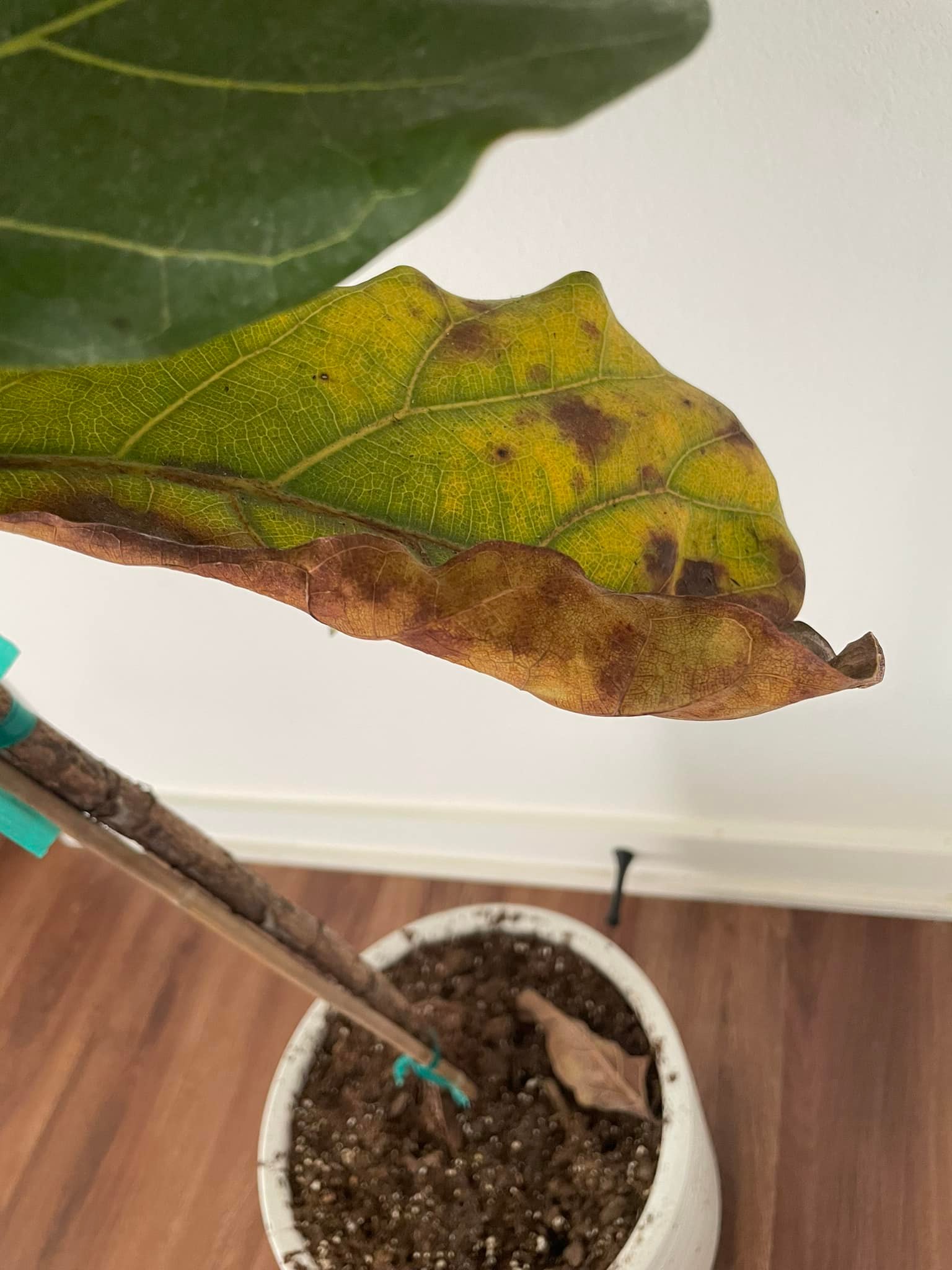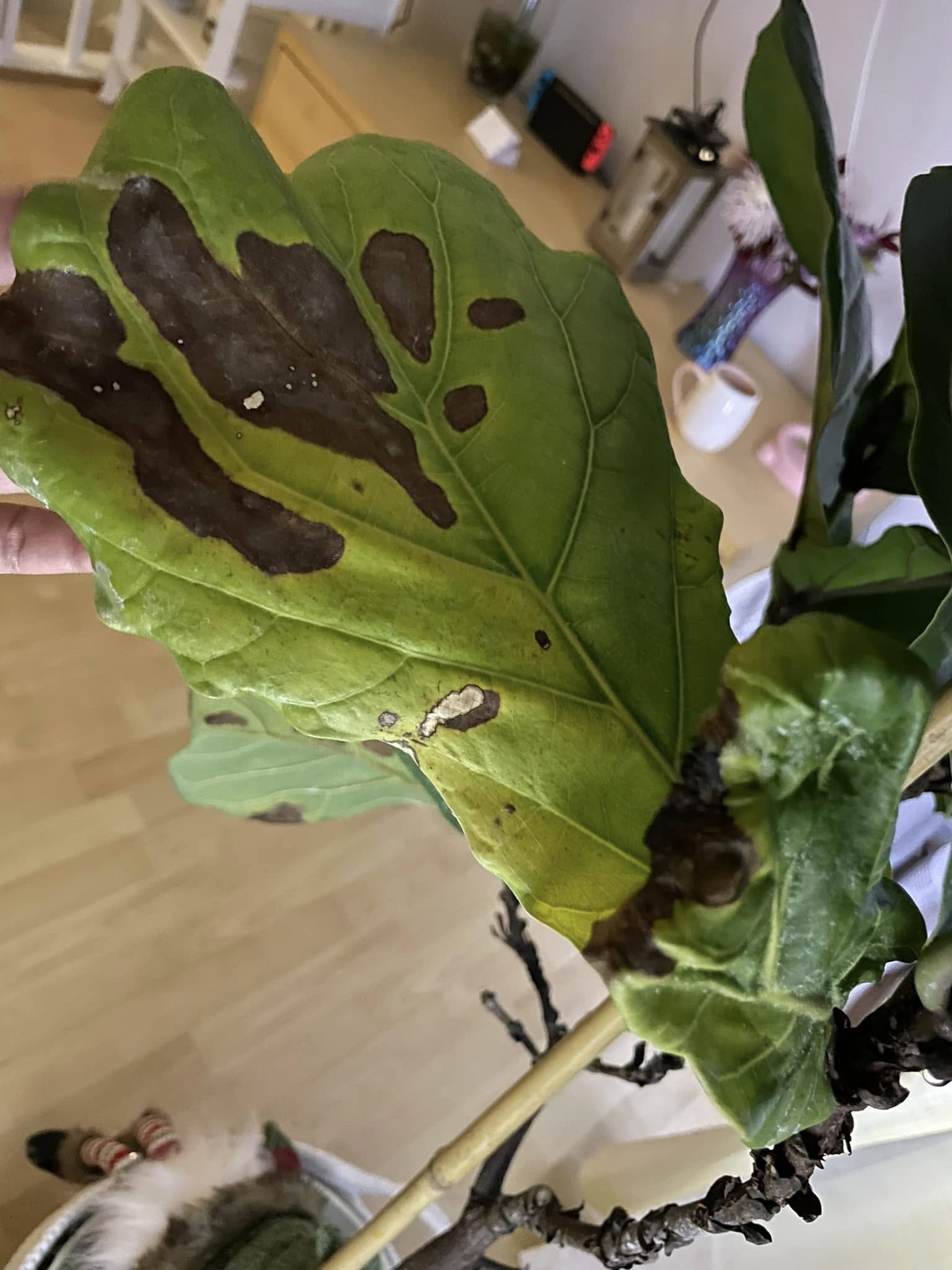
The fiddle leaf fig (Ficus lyrata) is a stunning indoor plant with large, glossy leaves that can instantly elevate any space. However, despite its beauty, it can be quite temperamental. If you’ve noticed your fiddle leaf fig looking wilted, dropping leaves, or developing brown spots, don’t panic! With the right care, you can bring your plant back to life.
In this ultimate rescue plan, we’ll walk you through step-by-step solutions to diagnose issues, provide necessary treatments, and nurse your fiddle leaf fig back to full health. Whether you are dealing with brown spots, drooping leaves, or a complete loss of foliage, this guide will help you revive your struggling plant.
I’ve provided detailed information in the article below to help with your concerns, However, if you still have questions or need more help, feel free to share photos of your plants or describe your issue on our Facebook Group. Just join the group and leave a comment on the most recent post — either I or someone from the community will respond as soon as possible. We also share helpful and unique plant care tips daily, so consider joining the group to stay updated!
Step 1: Diagnose the Problem
Before you take any action, it’s crucial to understand what’s causing your fiddle leaf fig to decline. This plant is sensitive to environmental changes, improper watering, and inadequate lighting. Identifying the root cause will help you implement the right solution effectively.
1. Yellowing Leaves

If you notice your fiddle leaf fig’s leaves turning yellow, it could be due to:
- Overwatering – Excessive moisture leads to root rot, which can cause yellowing leaves before they drop off.
- Poor drainage – If water isn’t draining properly, the roots may suffocate, causing yellowing and leaf drop.
- Nutrient deficiencies – A lack of essential nutrients, especially nitrogen, can cause leaves to lose their green color.
2. Brown Spots on Leaves

Brown spots can indicate various issues, including:
- Fungal infections – Overwatering and high humidity create a breeding ground for fungal diseases.
- Sunburn – If your plant is exposed to direct sunlight for long periods, the leaves may scorch.
- Root rot – A telltale sign of root damage from overwatering is brown patches on leaves.
3. Drooping or Wilting Leaves
If your fiddle leaf fig appears droopy, consider these causes:
- Underwatering – When the plant lacks moisture, the leaves lose their firmness and begin to droop.
- Temperature fluctuations – Exposure to drafts, sudden temperature drops, or being too close to air vents can stress the plant.
- Root damage – Repotting or accidental root disturbance can temporarily cause wilting.
4. Leaf Drop
Losing leaves suddenly? Here are some potential reasons:
- Environmental shock – Moving your plant to a new location or sudden changes in lighting and humidity can trigger leaf drop.
- Pest infestations – Insects like spider mites and mealybugs weaken the plant, leading to leaf loss.
- Low humidity – Dry indoor air can cause leaves to dry out and fall prematurely.
Once you’ve identified the symptoms, you can move on to the appropriate treatment plan.
Step 2: Adjust Watering Habits
Watering issues are the most common reason fiddle leaf figs start to decline. The key is to maintain a balance—neither overwatering nor underwatering. Here’s how to fix watering problems:
For Overwatered Plants
- Check the soil moisture by sticking your finger an inch deep into the soil. If it feels soggy, you’re overwatering.
- Allow the soil to dry out completely before the next watering.
- Ensure your pot has drainage holes to prevent water buildup.
- If root rot is present, remove the plant from its pot, trim off affected roots, and repot in fresh, well-draining soil.
For Underwatered Plants
- If the soil is extremely dry, rehydrate your plant by watering it thoroughly until excess water drains out.
- Establish a consistent watering routine—typically once a week, adjusting for seasonal humidity levels.
- Use room-temperature water to avoid shocking the roots.
Step 3: Optimize Light and Temperature Conditions
Fiddle leaf figs thrive in bright, indirect light. Too much direct sun can burn their leaves, while too little light can stunt growth.
- Place your plant near a sunny window but avoid prolonged direct sunlight, which can cause leaf scorch.
- Rotate your plant every few weeks to ensure even light distribution.
- Keep indoor temperatures between 65-75°F (18-24°C) for optimal growth.
- Avoid placing the plant near heaters, air conditioners, or drafty windows, as sudden temperature changes can stress it.
Step 4: Improve Soil and Drainage
Using the wrong soil mix can contribute to poor drainage, leading to root rot and other issues. Ensure your plant has the right soil conditions:
- Choose a well-draining potting mix with peat moss, perlite, or coconut coir.
- Repot your plant if the soil becomes compacted and is no longer draining properly.
- Always use a pot with drainage holes to prevent standing water.
Step 5: Check for Pests and Diseases
Pests can weaken your fiddle leaf fig and cause leaf damage. Here’s how to spot and treat infestations:
Common Pests:
- Spider Mites – Tiny, web-spinning pests that suck sap from leaves.
- Mealybugs – White, cotton-like insects that cluster on stems.
- Scale Insects – Small, brown bumps on leaves and stems.
How to Treat Pest Infestations:
- Wipe leaves with a mild soap and water solution.
- Use neem oil or insecticidal soap to eliminate pests.
- Isolate infected plants to prevent the spread of pests.
For fungal diseases like root rot, remove affected roots, repot the plant, and ensure proper airflow.
Step 6: Increase Humidity
Fiddle leaf figs prefer humidity levels of at least 50%. If your home has dry air, try these methods:
- Use a humidifier near the plant.
- Mist the leaves with water once or twice a week.
- Place a pebble tray with water underneath the pot to naturally increase humidity.
Step 7: Fertilize for Healthy Growth
Proper nutrients are crucial for a healthy fiddle leaf fig. Follow these fertilizing tips:
- Use a balanced liquid fertilizer (10-10-10 or 20-20-20) once a month during spring and summer.
- Reduce fertilization in fall and winter when growth slows.
- Avoid over-fertilizing, which can cause leaf burn.
Step 8: Prune and Propagate
Pruning helps remove dead leaves and encourages new growth.
- Trim off any damaged or dead leaves using sharp pruning shears.
- Cut just above a leaf node to encourage branching.
- To propagate, take a healthy stem cutting, place it in water or soil, and wait for roots to develop.
Step 9: Be Patient and Monitor Progress
Reviving a fiddle leaf fig takes time. Here are some final tips:
- Monitor your plant regularly and adjust care as needed.
- Be patient—recovery can take several weeks to months.
- Celebrate small wins like new leaf growth!
